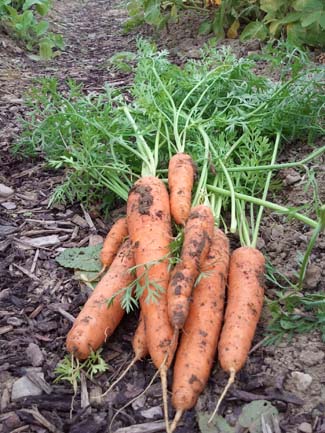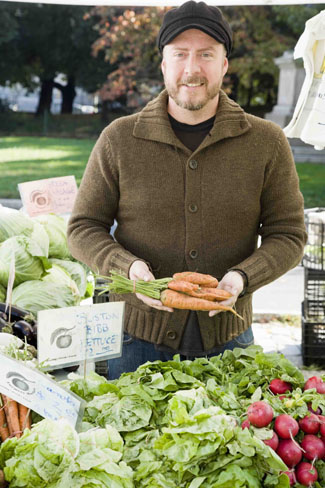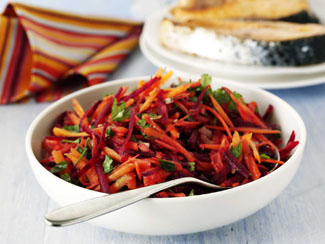Carrots
 A domesticated form of the wild carrot Daucus carota, an umbelliferous plant which is native to Europe and southwestern Asia, this everyday root vegetable is usually orange - although purple, red, white, and yellow varieties exist and are currently more widely grown, due to demand from chefs.
A domesticated form of the wild carrot Daucus carota, an umbelliferous plant which is native to Europe and southwestern Asia, this everyday root vegetable is usually orange - although purple, red, white, and yellow varieties exist and are currently more widely grown, due to demand from chefs.
Carrots are rich in dietary fibre, antioxidants, and minerals and their typical orange colour comes from beta-carotene, which is metabolised into vitamin A in humans and is important for good vision, including night vision.
Carrots are good for the skin and can apparently boost your UV protection if consumed on a regular basis; it is claimed that beta-carotene can help to protect your skin from excessive ultra-violet (UV) radiation and sunburn.
On the other hand, eating a vast amount of carrots can make the skin turn orange although the condition, while strange, is not thought to be dangerous.
 From the gardener’s point of view carrots can be difficult to grow because they attract the dread carrot fly, but they could be useful companion plants as intercropping them with tomatoes is thought to increase tomato production – and, in common with other umbelliferous plants, the flowers attract predatory wasps which kill many garden pests.
From the gardener’s point of view carrots can be difficult to grow because they attract the dread carrot fly, but they could be useful companion plants as intercropping them with tomatoes is thought to increase tomato production – and, in common with other umbelliferous plants, the flowers attract predatory wasps which kill many garden pests.
Although carrot leaves are also edible, all we usually eat is the taproot, which is enjoyably sweet and crunchy to eat raw; even when cooked, carrots are usually tastier when served with some ‘bite’ left, although this is not a universal rule as a soft melting texture can also be an asset to some slow-cooked dishes, allowing the natural sweetness to be fully released.
This natural sweetness also adds to their versatility as they can be used in baking (eg in the ever-popular carrot cake) and sweet dishes (eg the Indian carrot dessert Gaajar Kaa Halwaa).
Although thought of mainly as a winter vegetable – with sales peaking at Christmas - the new carrot season begins in July and, whether raw or cooked, young carrots are ideal for salads and barbecues.
It’s hard to imagine a French neighbourhood restaurant without carottes rapées on the menu but we tend to overlook their versatility as a summer vegetable.
Perfect for munching as a snack, or among a selection of crudités for dipping, it’s worth thinking about complementary flavours: carrots can be lifted into a new league if paired with, for example, citrus fruits – in a salad dressing or a roasting glaze - which bring out the sweetness, as does a glaze of honey and balsamic vinegar. Or try a partnership with herbs, notably French tarragon, which adds an unexpected layer of sophistication, or mint which contributes freshness.
More unusually, carrots can be used in combination with sea vegetables – a popular Irish example is Prannie Rhatigan’s Carrot & Sea Spaghetti Salad, from her book Irish Seaweed Kitchen.

RECIPE: Carrot and Beetroot Salad
Colourful and crunchy, this easy salad is rich in carotenoids, which are great for summer skin, with an anti-oxidant effect. Serve it at as a starter or side dish with fish or grilled meats, and at barbecues.
Click for recipe





There are currently no comments
Leave a comment
Not a member? Register for your free membership now!
Or leave a comment by logging in with: